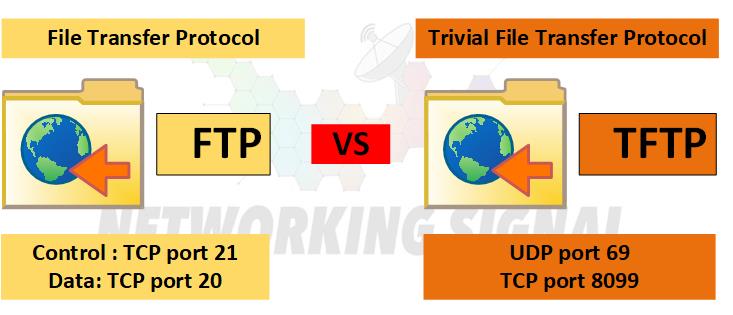FTP vs TFTP
Most people have heard of FTP or File Transfer Protocol. It is a standard network protocol used to transfer files between computers on the internet. TFTP, or Trivial File Transfer Protocol, is a simplified version of FTP that is often used for booting diskless workstations or downloading configuration files to network devices.
What is the Difference Between FTP and IFTP?
Here are the key differences between FTP and TFTP:
| FTP | TFTP | |
|---|---|---|
| 1 | FTP is a more complex protocol than TFTP and supports features such as file permissions, security, and authentication | TFTP is a very simple protocol and does not support permissions, security and authentication |
| 2 | FTP is typically used for transferring large files | TFTP is more commonly used for smaller files or for booting diskless workstations |
| 3 | FTP is a client-server protocol | TFTP is a peer-to-peer protocol |
| 4 | FTP requires a dedicated server | TFTP can be used with any computer that has TFTP software installed |
| 5 | FTP is a standard internet protocol | TFTP is not a standard internet protocol |
| 6 | FTP is typically used with port 21 | TFTP is generally used with port 69 |
| 7 | FTP is more secure than TFTP since it uses SSL/TLS for encryption | TFTP does not have any built-in security features |
| 8 | FTP is more widely used than TFTP since it is a standard internet protocol | TFTP is not as widely used since it is not a standard protocol |
| 9 | FTP is more complex than TFTP and requires more resources | TFTP is simple and requires fewer resources |
| 10 | FTP is used for transferring files between computers | TFTP is used for transferring files between network devices |
| 11 | FTP is a paid protocol | TFTP is a free protocol |
| 12 | FTP is typically used with a graphical user interface | TFTP is generally used with a command line interface |
| 13 | FTP is more common than TFTP | TFTP is less common than FTP |

